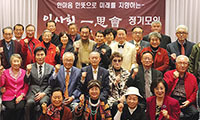
Black historical figures decorate a store’s security gate in Harlem.

Gentrification has brought a construction boom to Harlem, and shops like BBraxton, a stylish men’s salon.
By TRYMAINE LEEThe boy pressed his face to the window of the men’s salon, his breath fogging the glass. He stood there, on a wintry day, staring at the well-dressed men swathed in hot towels.
After a few minutes he walked in, his tattered sneakers squeaking on the gleaming hardwood.
“He asked what we did here,” said Tony Van Putten, who owns the year-old shop, called BBraxton, at Fifth Avenue and 116th Street in Harlem. “And when I told him that we cut hair, he gave me this look.
And he asked if it was O.K. if he could get his hair cut here, too.”
The boy seemed more accustomed to the streets than to a place like BBraxton, Mr. Van Putten said, but inside the shop he saw men who were black like him although they were wearing expensive clothes and shined shoes. The boy’s eyes seemed to ask: Am I good enough to be in a place like this?
For the past decade, Harlem has been gentrifying rapidly. But while affluent white professionals are the visible symbol of that change, the fact is that often the wealthy arrivals, like the patrons at BBraxton, are black.
Gentrification in any color makes similar impacts - rising rents, high-end merchants, displacement, home renovations - but black gentrification has an emotional texture far different from the archetypal kind, both for residents and for newcomers. This is particularly true in Harlem, the historic capital of black America.
Some local residents are a bit uncomfortable with the wealthy set but aspire to join it. Others resent the incursions on their neighborhood and feel that the newcomers, like other affluent professionals, are interested mostly in maintaining property values and their comfortable lifestyles.
The black arrivals, in turn, may feel a special duty as blacks to help Harlem and its people, or they may feel ill-treated by them, or they may feel guilty knowing that others of their own race are in need - and often standing right outside the polished doors of their new brownstones.
“There are black people here in Harlem who share physical residence,” said Howard Dodson, general director of the Schomburg Center for Research in Black Culture, the major repository in Harlem of books and other artifacts of African-American cultural life.“But saying ‘a community’ is another thing. The question is: Can community be built across these racial and class lines in the new Harlem, in this new reality?”
Some black entrepreneurs say they have encountered hostility, but in the opinion of Kevin McGruder, a Harlemite who is a co-owner of Harlemade, a Harlem-centric gift shop on Malcolm X Boulevard, black residents are generally more accepting of the black newcomers than of white ones.
“People focus on the white people and that’s more the fear,” Mr. McGruder said. “There is a feeling that a black person, even if he or she is upper-income, many or most will be able to identify with things that are happening in Harlem. ”
Warner Johnson, a 45-year-old Internet entrepreneur , suggests that tradition also helps to smooth black-on-black relations.
“You always had people that had means and people that didn’t have means in Harlem,” he said. “If you were black back in the day and had money, there was nowhere else you could live. So we never looked at that as something of a dividing point.”
Mr. Johnson, who moved to Harlem in 1993 (“when police helicopters were still flying outside of my window”), also says Harlem’s role as the nation’s black capital helps ease black-black tensions.
“Being a culture mecca,” he said, “supersedes all the notions of the affluence component.”
When Kim Martin-Shah, a 31-year-old stay-at-home mom, looks out from her plush Harlem condominium apartment, she sees a world that saddens her. She sees black mothers struggling to feed their children while she and her husband, who works for the investment bank Merrill Lynch, and their 22-month-old son, Ameer, live the American dream.
Ms. Martin-Shah is hardly unaware of her racial kinship with the less fortunate outside her window.
“I don’t think I have done anything wrong, nor do I feel I am responsible for the dire situation many of my neighbors are in,” Ms.
Martin-Shah said. But she added, “These are my people, even though I might not relate to some of their financial woes.”
스마터리빙
more [ 건강]
[ 건강]이제 혈관 건강도 챙기자!
[현대해운]우리 눈에 보이지 않기 때문에 혈관 건강을 챙기는 것은 결코 쉽지 않은데요. 여러분은 혈관 건강을 유지하기 위해 어떤 노력을 하시나요?
 [ 건강]
[ 건강]내 몸이 건강해지는 과일궁합
 [ 라이프]
[ 라이프]벌레야 물럿거라! 천연 해충제 만들기
 [ 건강]
[ 건강]혈압 낮추는데 좋은 식품
[현대해운]혈관 건강은 주로 노화가 진행되면서 지켜야 할 문제라고 인식되어 왔습니다. 최근 생활 패턴과 식생활의 변화로 혈관의 노화 진행이 빨라지고
사람·사람들
more많이 본 기사
- 베네수엘라 권한대행, 미국에 ‘협력’ 제안… “존중하는 관계로”
- 이혜훈 기획예산처 장관 후보자, 재산 175억7천만원 신고
- 李대통령 “공급망 예측 어려워져…韓中 경제협력 새항로 찾아야”
- ‘길잃은’ 中 중남미정책…일대일로에 직격탄
- 트럼프 “우리가 베네수 맡고 있다…선거前 국가재건이 먼저”
- 세계 곳곳서 ‘美규탄’ 시위…마두로 아들 “거리로 나와달라”
- ‘케데헌’, 크리틱스초이스 애니메이션상·주제가상 2관왕
- 옐런 전 재무 “공공부채 상환부담 낮추려 통화정책 활용 우려”
- [美 마두로 축출] 트럼프 말대로 베네수 석유 증산할까…전문가 ‘글쎄’
- 베네수엘라, 세계 최대 매장량이라는데…국제유가도 영향받나
- 美 ‘유령 특수부대’ 델타포스
- 메스터 전 연은 총재 “관세영향 제외해도 인플레 위험 여전”
- ‘국민 배우’ 안성기 별세…69년 연기 인생 마침표
- 故김영인 누구?..故송도순 이어 별세, 슬픔에 빠진 방송계
- 코미디부터 예술영화까지… ‘천의 얼굴’로 스크린 누빈 안성기
- [CES 2026] 6억달러 새단장한 우아한 전시장…내부엔 지게차 동원 개막준비
- 이부진 호텔신라 사장 NBA 중계화면에…아들과 함께 미국서 휴가
- [美 마두로 축출] 미 곳곳서 반전시… 1
- [CES 2026] 우유 꺼내고 수건 개는 로봇…LG ‘가사 해방’ 속도
- 아이유♥변우석·지성·신하균·유연석.. ‘2026 MBC 연기대상’ 벌써 치열하다
- [美 마두로 축출] 뉴욕 구치소 수감된 마두로… “좋은 밤이에요” 인사도
- [美 마두로 축출] 마두로 베네수엘라 대통령, 5일 법정 첫 출석
- 임재범, 은퇴 발표 “박수칠 때 떠나겠다”
- [한인 은행·업체 시무식 화보] “붉은 말 기운받고 한인 경제 도약에 기여하자”
- [CES 2026] “CES는 미중 긴장완화 ‘가교’…스위스 같은 중립지대 지향”
- 美, 베네수 부통령에 압박 “마두로와 다른 선택하길”
- 국힘에 ‘살려달라’고 문자 메시지?…이혜훈측 “전혀 사실 아냐”
- 美 경제석학 “韓 원화가치 매우 저평가…향후 회복할 것”
- 현대차·기아·제네시스… 2025년 판매 역대 최다
- [美 마두로 축출] 트럼프 ‘서반구 패권’ 구상 본격화하나…중남미 긴장 고조
- 김병기, 경찰에 줄고발… ‘아들 취업… 1
- 영종도 인천공항 잇는 3번째 다리 내일 개통…요금 2천원
- [美 마두로 축출] 트럼프 “베네수엘라 부통령이 잘하면 미군 주둔 안해”
- 美, 직접통치아닌 압박통한 정책개입 가닥… “함포외교”
- 여야 새해도 극한대치… ‘종합·통일교특검’ 법사위 첫 戰場 예고
- 젤렌스키 “이달 내로 종전안 놓고 美 정상회의 희망”
- ‘연프 중독’ 고준희, 눈 성형 고백에 풍자 “과연 눈만 했을까?” 의심
- ‘에릭♥’ 나혜미, 두 아들과 일상 공개..짱구 볼살+붕어빵 눈매 “우리 강아지들”
- 해넘긴 미중정상회담 합의문 발표…무역합의 불확실성↑
- [美 마두로 축출] 루비오 국무장관, 베네수 부통령에 “마두로와 다른 선택하길”
- [일지] 트럼프의 베네수 보트 공격부터 마두로 대통령 체포까지
- “황희찬 시즌 최고의 퍼포먼스” 극찬, 웨스트햄전 1골·1도움 폭발... 울버햄프턴 ‘EPL 20경기 만에 감격 첫 승’
- 李대통령 “中, 한반도 평화 파트너…… 2
- [美 마두로 축출] 트럼프, 두번째 중대 군사작전…北이 받을 메시지는
- [美 마두로 축출] 갈라진 지구촌…쏟… 1
- 20kg 빼고 아이돌 외모 되찾더니..강남, 기안84와 북극 마라톤 도전
- 北, 탄도미사일 발사… ‘마두로 축출’ 파장 속 무력시위
- “올해도 미 성장 지속… S&P 500 두 자릿수↑”
- ‘종합선수권 10연패’ 차준환, 3연속 올림픽행 “꿈의 무대... 모든 것 보여주고 오겠다”
- [美 마두로 축출] 한밤 안가 급습 ‘확고한 결의’ 작전… “침실서 끌어내”
1/5지식톡

-
 미 육군 사관학교 West Poin…
0
미 육군 사관학교 West Poin…
0https://youtu.be/SxD8cEhNV6Q연락처:wpkapca@gmail.comJohn Choi: 714-716-6414West Point 합격증을 받으셨나요?미 육군사관학교 West Point 학부모 모…
-
 ☝️해외에서도 가능한 한국어 선생님…
0
☝️해외에서도 가능한 한국어 선생님…
0이 영상 하나면 충분합니다!♥️상담신청문의♥️☝️ 문의 폭주로 '선착순 상담'만 진행합니다.☎️ : 02-6213-9094✨카카오톡ID : @GOODEDU77 (@골뱅이 꼭 붙여주셔야합니다…
-
 테슬라 자동차 시트커버 장착
0
테슬라 자동차 시트커버 장착
0테슬라 시트커버, 사놓고 아직 못 씌우셨죠?장착이 생각보다 쉽지 않습니다.20년 경력 전문가에게 맡기세요 — 깔끔하고 딱 맞게 장착해드립니다!장착비용:앞좌석: $40뒷좌석: $60앞·뒷좌석 …
-
 식당용 부탄가스
0
식당용 부탄가스
0식당용 부탄가스 홀세일 합니다 로스앤젤레스 다운타운 픽업 가능 안녕 하세요?강아지 & 고양이 모든 애완동물 / 반려동물 식품 & 모든 애완동물/반려동물 관련 제품들 전문적으로 홀세일/취급하는 회사 입니다 100% …
-
 ACSL 국제 컴퓨터 과학 대회, …
0
ACSL 국제 컴퓨터 과학 대회, …
0웹사이트 : www.eduspot.co.kr 카카오톡 상담하기 : https://pf.kakao.com/_BEQWxb블로그 : https://blog.naver.com/eduspotmain안녕하세요, 에듀스팟입니다…
케이타운 1번가
오피니언
 손영아 문화 칼럼니스트 / YASMA7 대표
손영아 문화 칼럼니스트 / YASMA7 대표 [손영아의 문화산책] ‘슈만의 연가’… 170년 전 멈춘 시간, 끝나지 않은 사랑
 김재천 서강대 국제대학원 교수
김재천 서강대 국제대학원 교수 [김재천 칼럼] 2026년, 미·중 대타협은 가능할까
 조지 F·윌 워싱턴포스트 칼럼니스트
조지 F·윌 워싱턴포스트 칼럼니스트 [조지 F. 윌 칼럼] AI 투자 붐이 걱정된다면?… 역사적 맥락을 보라
 이희숙 시인·수필가
이희숙 시인·수필가 [금요단상] 차가운 길, 이불 한 장의 온기
 한영일 / 서울경제 논설위원
한영일 / 서울경제 논설위원 [만화경] 33년만에 퇴역하는 장보고함

[왈가 왈부] 이혜훈 ‘정말 널 죽였으면’ 폭언, 장관직 수행 가능할까요
 정숙희 논설위원
정숙희 논설위원샴페인, 마지막 날과 첫날을 위하여
 조지 F·윌 워싱턴포스트 칼럼니스트
조지 F·윌 워싱턴포스트 칼럼니스트 [조지 F. 윌 칼럼] 저무는 2025년에 안도의 한숨
 김동찬 시민참여센터 대표
김동찬 시민참여센터 대표 [미국은 지금] 책임 있는 자본 없으면 커뮤니티 미래도 없다
1/3지사별 뉴스

뉴욕시 첫 무슬림 시장 맘다니 취임
미국 최대도시이자 경제 수도로 꼽히는 뉴욕시의 첫 무슬림·남아시아계 시장이자 스스로를 민주사회주의자라고 부르는 조란 맘다니 신임 뉴욕시장이 새…
뉴욕시민 기대수명 82.6세⋯팬데믹 이전 회복

건국 250주년 워싱턴 모뉴먼트 라잇쇼
워싱턴 DC 내셔널 몰 중심에 위치한 워싱턴 모뉴먼트(Washington Monument)가 화려한 불빛으로 장식됐다. 지난 31일 새해 카운…
“소확행<작지만 확실한 행복> 즐겨요”

[美 마두로 축출] 트럼프 “베네수엘라 부통령이 잘하면 미군 주둔 안해”
도널드 트럼프 대통령은 베네수엘라 측이 미국이 바라는 대로 행동하는 한 미군이 베네수엘라에 주둔하지 않을 것이라고 말했다고 뉴욕포스트가 3일 …
중부 캘리포니아 ‘한인 이민사’ 나왔다





















































.png)


댓글 안에 당신의 성숙함도 담아 주세요.
'오늘의 한마디'는 기사에 대하여 자신의 생각을 말하고 남의 생각을 들으며 서로 다양한 의견을 나누는 공간입니다. 그러나 간혹 불건전한 내용을 올리시는 분들이 계셔서 건전한 인터넷문화 정착을 위해 아래와 같은 운영원칙을 적용합니다.
자체 모니터링을 통해 아래에 해당하는 내용이 포함된 댓글이 발견되면 예고없이 삭제 조치를 하겠습니다.
불건전한 댓글을 올리거나, 이름에 비속어 및 상대방의 불쾌감을 주는 단어를 사용, 유명인 또는 특정 일반인을 사칭하는 경우 이용에 대한 차단 제재를 받을 수 있습니다. 차단될 경우, 일주일간 댓글을 달수 없게 됩니다.
명예훼손, 개인정보 유출, 욕설 등 법률에 위반되는 댓글은 관계 법령에 의거 민형사상 처벌을 받을 수 있으니 이용에 주의를 부탁드립니다.
Close
x